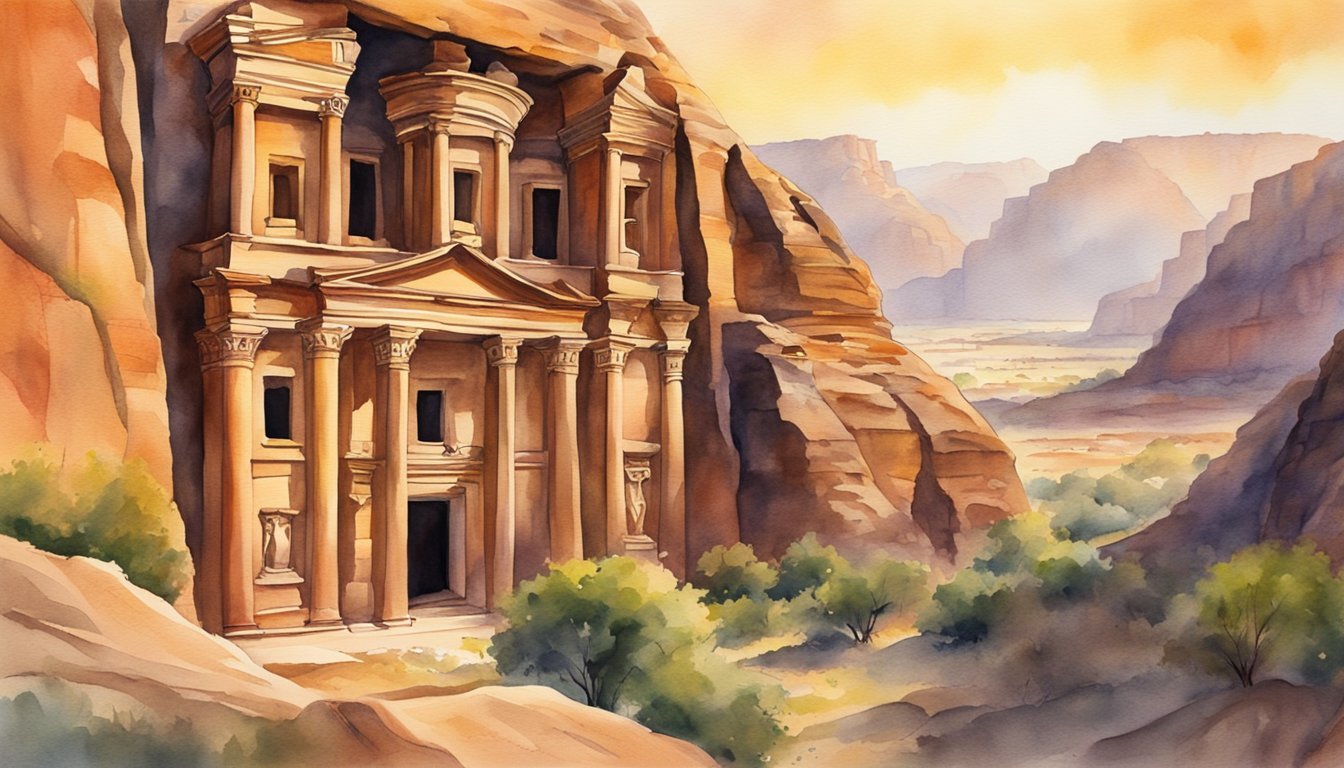Discovering Petra

History and Significance
Petra, an ancient city in Jordan, is known for its remarkable history and archaeological significance. Petra was originally inhabited by the Nabataeans, an Arab tribe who established it as their capital. It later became a prominent trading post during the Roman Empire. One of the most fascinating aspects of Petra’s history is its status as a UNESCO World Heritage Site, which preserves its archaeological treasures and showcases its importance to the world.
Over the centuries, Petra faced several challenges, including earthquakes that led to the decline of the Nabataean culture. The city experienced a brief resurgence during the Byzantine era, but it was ultimately abandoned until its rediscovery by modern archaeology. The English poet John William Burgon once described Petra as a “rose-red city half as old as time,” capturing its timeless allure.
Petra’s Architecture
The most iconic feature of Petra is its rock-cut architecture, which consists of intricate designs carved directly into the sandstone cliffs. The Nabataeans demonstrated remarkable engineering skills in creating their city, as evidenced by the detailed facades and impressive water conduit system.
Some of the most famous structures in Petra include:
- The Treasury: It is a stunning facade carved into a massive cliff face, which showcases the intricate artistic style of the Nabataeans.
- The Monastery: A large monument located at the top of a mountain, offering a breathtaking view of the surrounding landscape.
- The Royal Tombs: A series of tombs displaying various architectural styles, likely constructed for the burial of important Nabataean leaders.
Petra’s architecture displays a unique blend of influences from the Roman, Arab, and Nabatean cultures, making it a true melting pot of design and engineering practices. The extraordinary craftsmanship, combined with the city’s rich history, cements its reputation as one of the most important archaeological sites in the world.
How Has the First Photograph Captured Historical Moments Similar to the Wonders of Petra?
The first photograph history allows us to glimpse pivotal moments frozen in time, much like the ancient wonders of Petra. Both capture the essence of their eras, invoking curiosity and admiration. Just as Petra tells stories of civilization, the first photograph serves as a visual narrative of our shared past.
Exploring Petra Today
Planning Your Visit
Petra, a UNESCO World Heritage site, is a must-see attraction when visiting Jordan. The ancient city offers breathtaking views in a unique canyon setting. To get the most out of your trip, prepare for the weather, which can range from hot during the day to cold at night. Some helpful resources to consult include itineraries and maps.
- Entry tickets: As of 2023, a one-day ticket costs 50 JD, a two-day ticket is 55 JD, and a three-day ticket is priced at 60 JD. Children under 12 enter free. Petra By Night tickets cost 17 JD.
- Accommodations: Wadi Musa is the closest town to Petra and offers a range of hotels. It’s advisable to book your stay nearby to maximize your time exploring the site.
- Tour options: There are various guided tour options available, providing valuable insights and historical context.
Tourist Attractions and Activities
- The Siq: This narrow and winding canyon leads visitors into the heart of Petra. As you walk through the Siq, marvel at the ancient water management systems and dams that were part of the city’s sophisticated infrastructure.
- The Treasury (Al-Khazneh): One of the most iconic sights in Petra, the Treasury is a magnificent facade carved into the sandstone. Make sure to catch a glimpse of the Treasury from various viewpoints.
- Royal Tombs: These impressive and intricately carved tombs showcase the craftsmanship of the Nabateans.
- The Monastery (Ad-Deir): A hike to the Monastery rewards you with stunning views and the opportunity to explore an ancient temple carved into the rock.
- Petra Theatre: This ancient theatre could accommodate up to 4,000 spectators, and its remarkable preservation allows visitors to experience a piece of history.
- Qasr al-Bint: This temple is one of the few freestanding structures in Petra and offers a great insight into religious practices during the Nabatean period.
- Petra By Night: Don’t miss the chance to see the Treasury spectacularly illuminated with thousands of candles during the Petra By Night event.
With so much to see and do, Petra is truly a destination that deserves your time and attention. By planning your visit carefully and taking advantage of the many attractions and activities available, you can create lasting memories in this enchanting ancient city.

